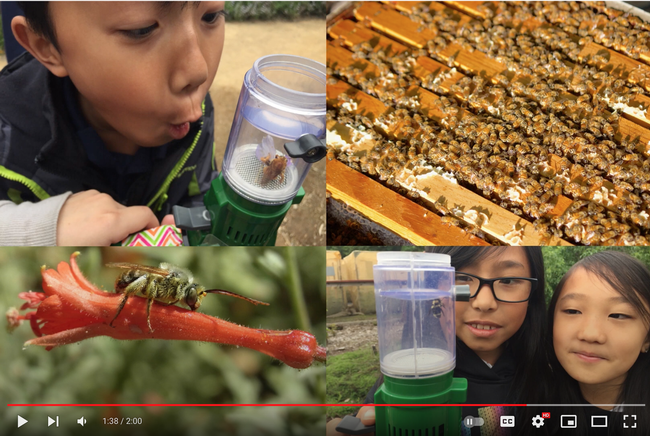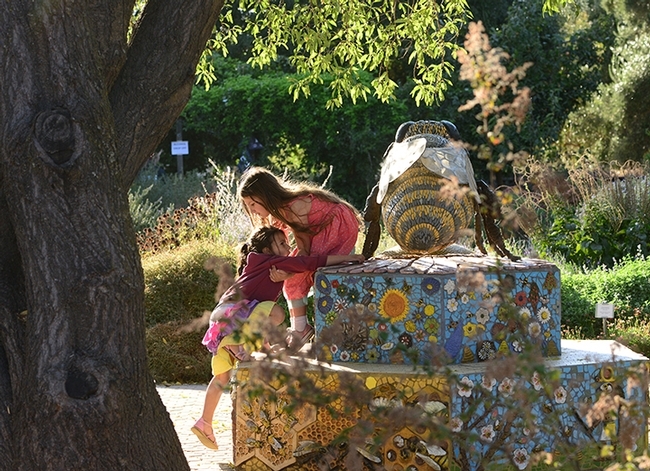- Author: Kathy Keatley Garvey
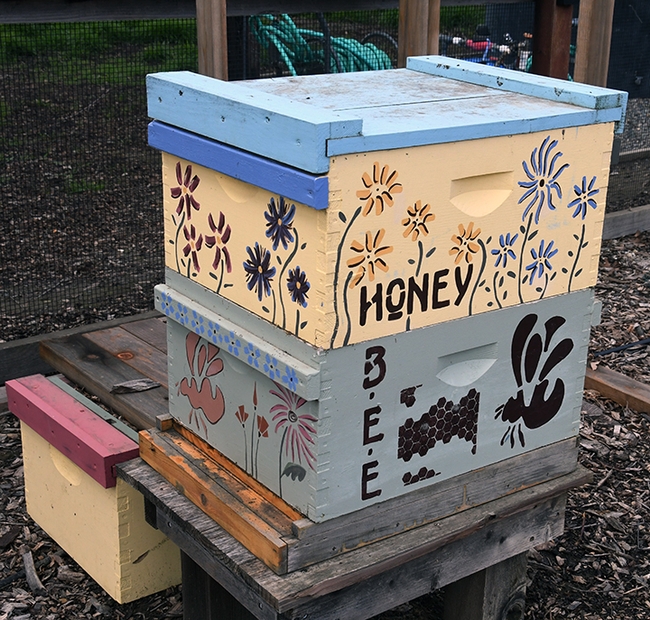
No, wait. Catch...examine...and then release.
That's what attendees will do at the UC Davis Bee Haven's 15th anniversary celebration, set from 10 a.m. to noon on Saturday, April 6 on Bee Biology Road, west of the central campus.
They'll be using a bee vacuum device to scoop up a honey bee, carpenter bee, bumble bee or other pollinator for close observation.
The half-acre garden is located next to the Harry H. Laidlaw Jr. Honey Research Facility. Both are part of the UC Davis Department of Entomology and Nematology.
The open house, free and family friendly, will include a tour of the garden at 11 a.m.; catch-and-release bee activity to observe bees up close; information about low-water plants; and presentations on University of California pollinator research.
The haven is open daily from dawn to dusk (no admission). It is described as "a unique outdoor museum that provides resources for local bee pollinators, inspires and educates visitors to create pollinator habitat gardens, and provides a site for the observation and study of bees and the plants that support them."
Director of the garden is Elina Lastro Niño, associate professor of Cooperative Extension - Apiculture, UC Davis Department of Entomology and Nematology. Christine Casey is the manager, the academic program management officer.
Workers installed the garden in the fall of 2009, under the tenure of interim department chair Lynn Kimsey, now UC Davis distinguished professor emerita, and with primary funds from the Häagen-Dazs ice cream brand. Featuring a series of interconnected gardens with names like “Honeycomb Hideout,” “Nectar Nook” and “Pollinator Patch,” it was designed to provide the Laidlaw honey bees with a year-around food source, raise public awareness about the plight of honey bees, encourage visitors to plant bee-friendly gardens of their own, and serve as a research site.
A six-foot worker bee sculpture of ceramic and mosaic anchors the garden. It's the work of self-described "rock artist" Donna Billick of Davis. UC Davis distinguished professor Diane Ullman and Billick co-founded and directed the UC Davis Art-Science Fusion Program, and their art and that of Ullman's entomology students, as well as members of the community and other volunteers, are showcased throughout the garden.
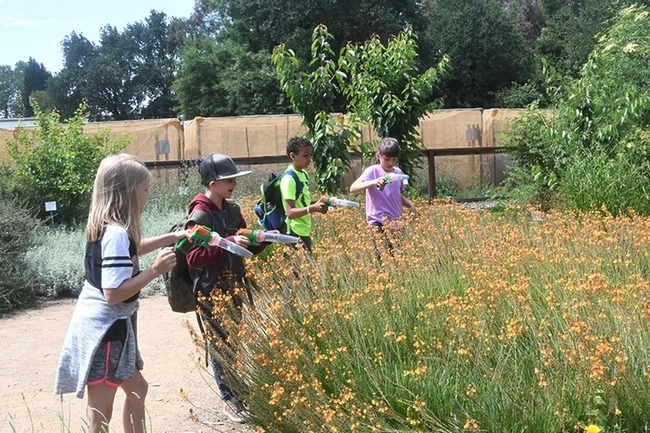
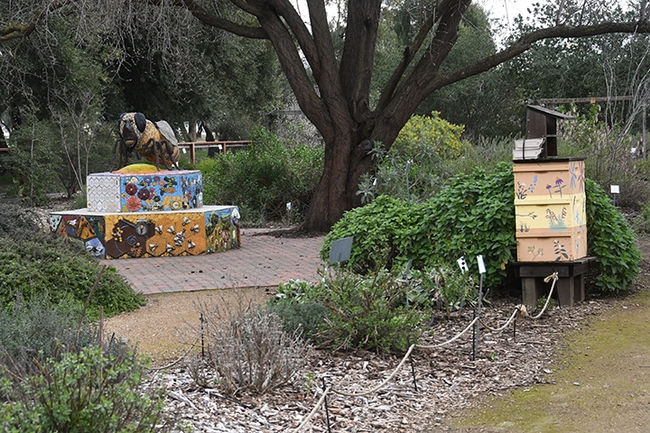
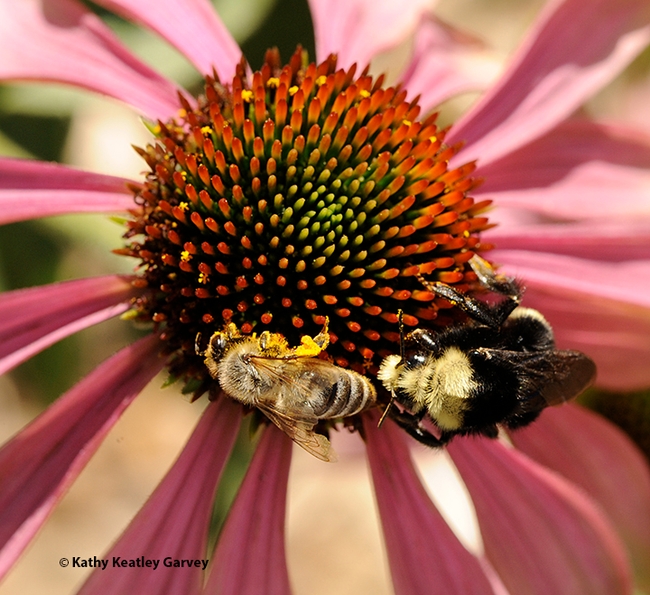
- Author: Kathy Keatley Garvey
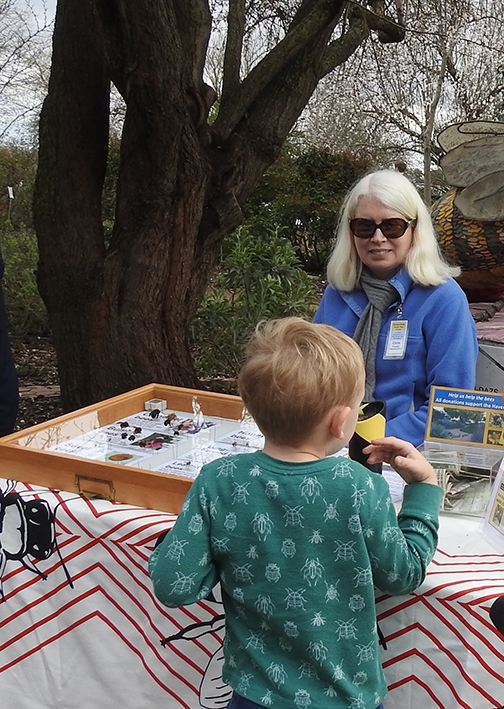
That's when the UC Davis Department of Entomology and Nematology will celebrate the 15th anniversary of its bee garden with an open house from 10 a.m. to noon. It's free and family friendly.
The half-acre garden is located next to the Harry H. Laidlaw Jr. Honey Research Facility on Bee Biology Road, west of the central campus.
The open house will include a tour of the garden at 11 a.m.; catch-and-release bee activity to observe bees up close; information about low-water plants; and presentations on University of California pollinator research.
Open from dawn to dusk (free admission), the Bee Haven is described as "a unique outdoor museum that provides resources for local bee pollinators, inspires and educates visitors to create pollinator habitat gardens, and provides a site for the observation and study of bees and the plants that support them."
Director of the garden is Elina Lastro Niño, associate professor of Cooperative Extension - Apiculture, UC Davis Department of Entomology and Nematology. Christine Casey is the manager, the academic program management officer.
The garden was installed in the fall of 2009, under the tenure of interim department chair Lynn Kimsey, now UC Davis distinguished professor emerita, and with primary funds from the Häagen-Dazs ice cream brand. Featuring a series of interconnected gardens with names like “Honeycomb Hideout,” “Nectar Nook” and “Pollinator Patch,” it was designed to provide the Laidlaw honey bees with a year-around food source, raise public awareness about the plight of honey bees, encourage visitors to plant bee-friendly gardens of their own, and serve as a research site.
“This garden is a living laboratory to educate, inspire and engage people of all ages in the serious work of helping to save honey bees,” said Dori Bailey, then director of Haagen-Dazs Consumer Communications.
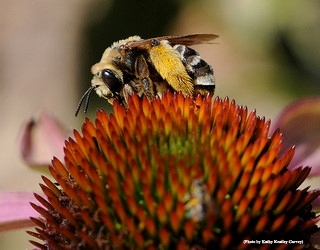
Art graces the garden, thanks to the UC Davis Art/Science Fusion Program, founded and directed by entomologist-artist Diane Ullman, UC Davis distinguished professor of entomology; and Davis-based artist Donna Billick. Billick, a self-described "rock artist," sculpted the six-foot-long worker bee that anchors the haven. Students and area residents crafted the bee-motif ceramic tiles that line a bench, which also includes the names of major donors.
A mural featuring native bees graces the shed in the garden. It was a project of the Entomology 1 class, "Art, Science and the World of Insects," taught by Ullman and Billick. Then doctoral student Sarah Dalrymple of the Rick Karban lab, served as the graphics project coordinator and teaching assistant, guiding the students on design, creation and installation of the panels. She went on to be named the 2011 recipient of the UC Davis Outstanding Graduate Student Teaching Award and praised for fusing the boundaries of biology, art and culture.
The Bee Haven came to "bee" after officials at the Haagen-Dazs read a research news story on honey bees, written by communication specialist Kathy Keatley Garvey and telephoned her. The article, on "building a better bee," chronicled the plight of honey bees and the work of bee breeder-geneticist Susan Cobey, then manager of the Harry H. Laidlaw Jr. Honey Bee Research Facility and now with Washington State University. Haagen-Dazs served as the primary donor of the garden and also funded the Häagen-Dazs Postdoctoral Fellowship at UC Davis. It went to Michelle Flenniken, an insect virus researcher based at UC San Francisco. She is now a professor at Montana State University.
Links:
Sausalito Team Wins Design Competition
http://ucanr.edu/blogs/blogcore/postdetail.cfm?postnum=15240
Grand Opening Celebration of Honey Bee Garden
http://ucanr.edu/blogs/blogcore/postdetail.cfm?postnum=15249
Eagle Scout Project: Fence Around the Bee Garden
http://ucanr.edu/blogs/blogcore/postdetail.cfm?postnum=10166
Campus Buzzway: Wildflowers
http://ucanr.edu/blogs/blogcore/postdetail.cfm?postnum=15242
Haagen-Dazs Honey Bee Haven: Sacramento Bee Award
(With photo of founding volunteers)
http://ucanr.edu/blogs/blogcore/postdetail.cfm?postnum=10205
Shedding Light on Native Bees
https://ucanr.edu/blogs/blogcore/postdetail.cfm?postnum=27570
For more information on the UC Davis Bee Haven, access the website at https://beegarden.ucdavis.edu.
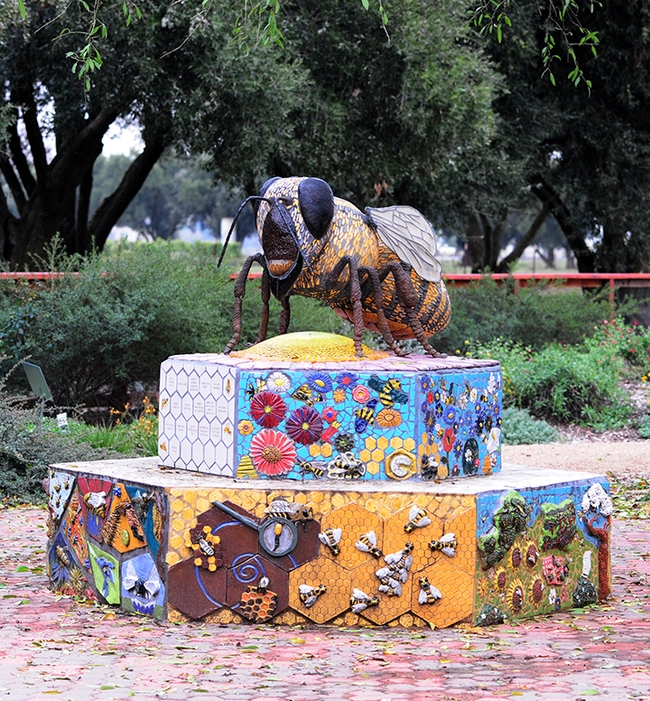
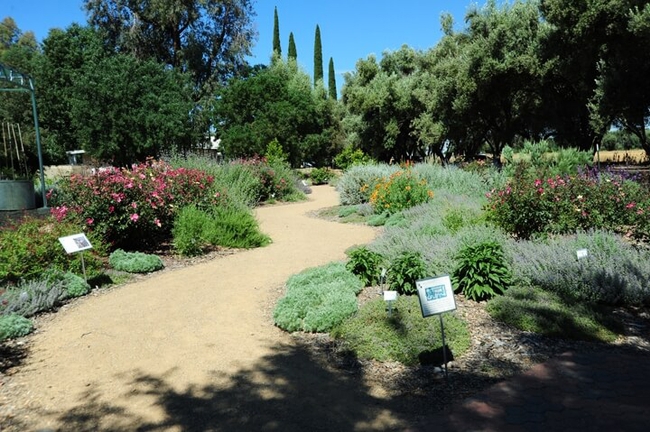
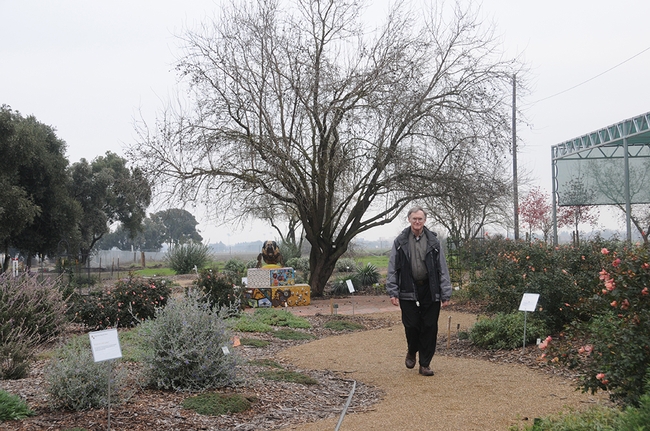
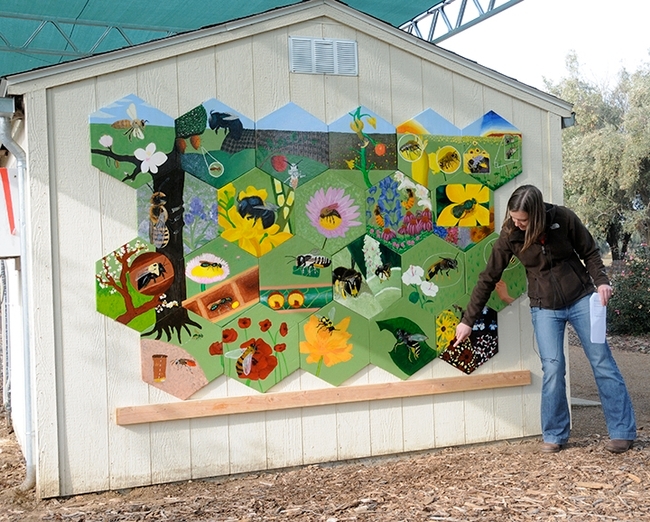
- Author: Kathy Keatley Garvey
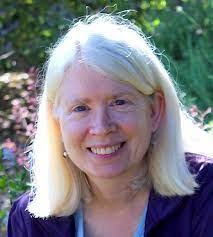
You'll want to register for a class on "I Planted a Bee Garden: Now What?," offered Saturday, Oct. 29 by the UC Davis Bee Haven, part of the Department of Entomology and Nematology.
The class, taught by Christine Casey, academic program management officer of the Bee Haven, is set from 9 a.m. to 10:30 a.m. in the Bee Haven, located on Bee Biology Road, next to the Harry H. Laidlaw Jr. Honey Bee Research Facility. It also will be offered online. Registration for the class, which covers a light breakfast and course materials, is $50. Proceeds will support the operation of The Haven.
Topics will cover turf removal and weed control, best bee plants for new gardeners, and turf vs. bee garden maintenance. Enrollment is limited to 25. To register, access
http://registration.ucdavis.edu/Item/Details/870.
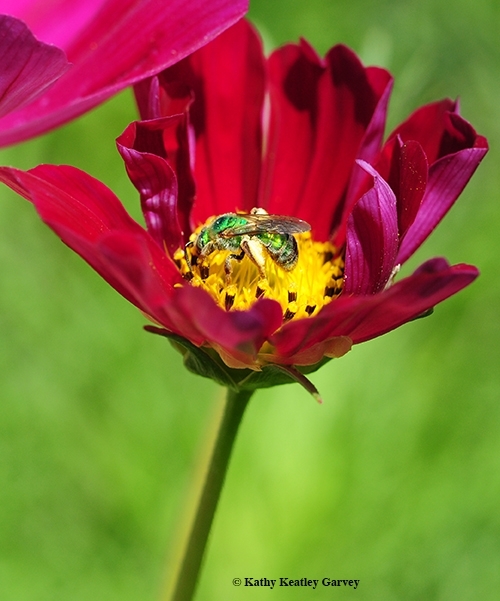
https://registration.ucdavis.edu/Item/Details/871.
UC Extension apiculturist Elina Lastro Niño of the Department of Entomology and Nematology serves as the faculty director of the half-acre garden, planted in the fall of 2019 under the direction of interim department chair Lynn Kimsey, director of the Bohart Museum of Entomology. Häagen-Dazs was the primary donor. (See timeline and history of the garden.)
The garden features art projects by the UC Davis Art/Science Fusion Program, co-founded and co-directed by the duo of entomologist/artist Diane Ullman, professor and former chair of the UC Davis Department of Entomology, and self-described "rock artist" Donna Billick of Davis. Billick created the 200-pound ceramic-mosaic bee sculpture, Miss Bee Haven, that anchors the garden.
The Haven is open daily from dawn to dusk. Admission is free. For more information access the website, Facebook page, Casey's Bee Gardener blog on the UC Agriculture and Natural Resources website, the Instagram account or the Twitter account.
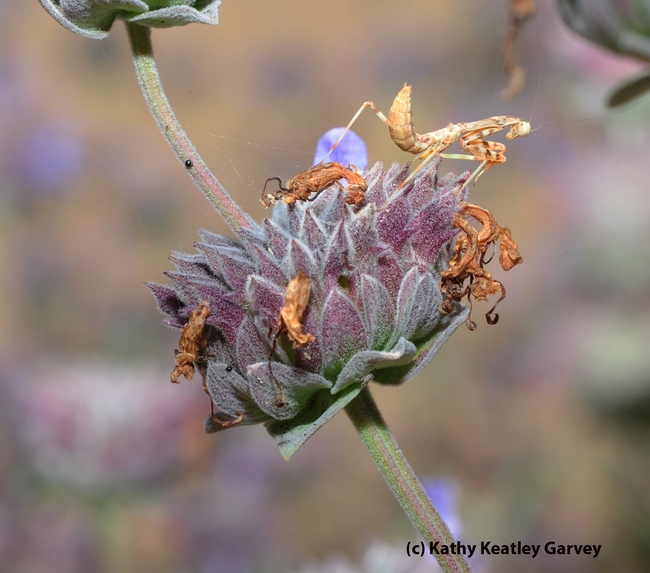
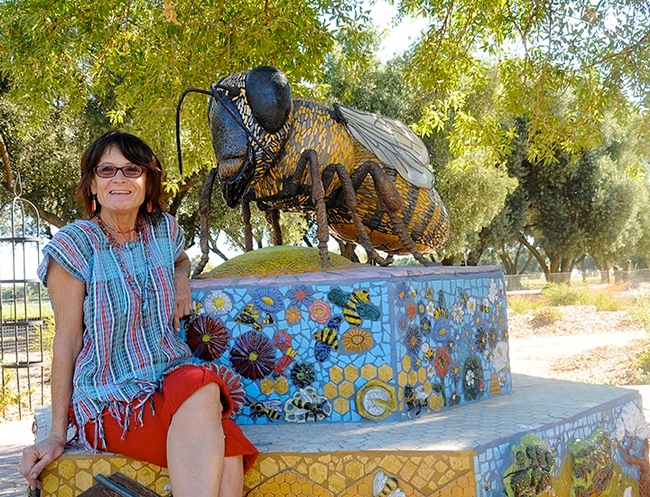
- Author: Kathy Keatley Garvey
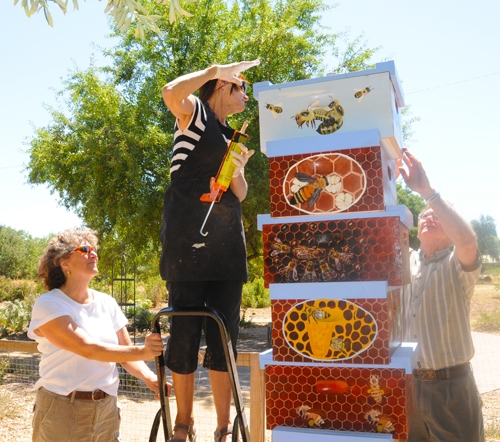
But the event also will include several tours to museums or collections.
One of the tours will be to the UC Davis Bee Haven, a half-acre bee demonstration garden located next to the Harry H. Laidlaw Jr. Honey Bee Research Facility on Bee Biology Road, west of the central campus.
Honey bees and native bees, as well as butterflies, dragonflies and other insects, frequent the garden.
The Haven staff will offer tours at noon and at 2 p.m., with a limit of 20 people per tour. "We'll focus on how best to observe and identify bees in the garden, as well as suggested bee plants that grow well in our area with low water," said Christine Casey, academic program management officer of the Bee Haven.
The garden, operated and maintained by the UC Davis Department of Entomology and Nematology, was installed in the fall of 2009 when professor Lynn Kimsey, director of the Bohart Museum of Entomology headed the department as interim chair. The art featured in the garden is the work of the UC Davis Art/Science Fusion Program, co-founded and co-directed by entomology professor/artist Diane Ullman and self-described "rock artist" Donna Billick. A six-foot-long ceramic-mosaic bee sculpture, crafted by Billick, anchors the garden. Columns of ceramic-mosaic bee boxes flank the entrance. Other sculptures beautify the garden as well.

Another project, supervised by Ullman and Billick in 2011 and coordinated by then doctoral student Sarah Dalrymple of the Rick Karban lab, features a mural of mostly native bees on the garden shed.
Background: Ullman and Billick were teaching an Entomology 1 class, "Art, Science and the World of Insects," with 22 students enrolled. Dalrymple, the teaching assistant, guided the students in the design, creation and installation of the panels.
The 22 students portrayed 22 bees, including such natives as mason, sweat, squash, leafcutter, blue orchard, carpenter and bumble bees. One of the non-natives: the European wool carder bee.
The UC Davis Bee Haven is in the midst of raising funds to finance classroom visits from low-income schools, and visits by youth groups. The fundraising project, with a goal of $3000, ends at 12:59 p.m., Feb 28. View Casey's ;YouTube video and access the Haven website. The CrowdFund site is at https://crowdfund.ucdavis.edu/project/29773
The bee garden is open daily from dawn to dusk except for Tuesdays (opens at 10 a.m.) "so we can maintain physical distance during garden maintenance," Casey says. Admission is free.
Resource:
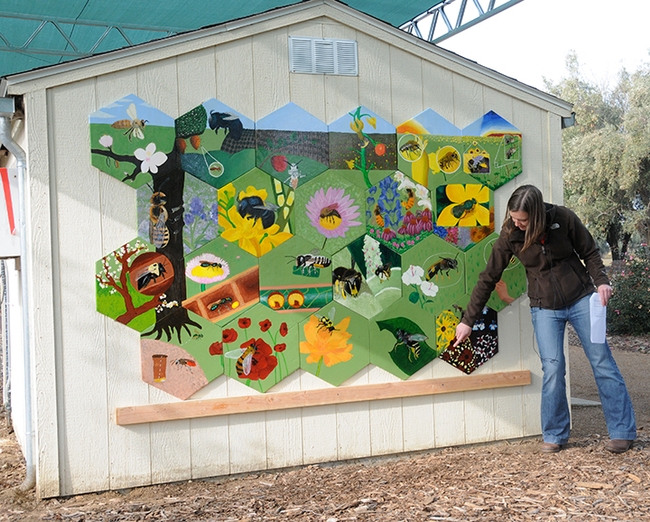
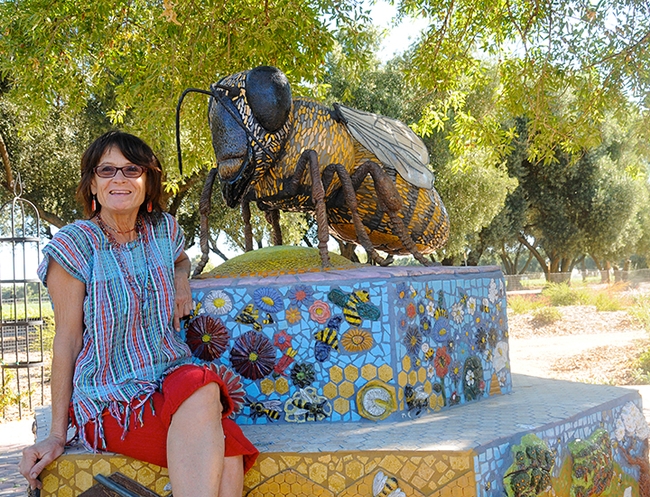
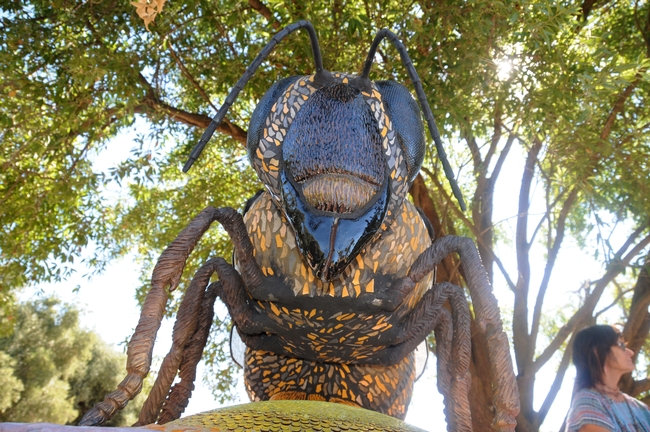

- Author: Kathy Keatley Garvey

The information they glean, process and retain as they learn about the importance of bees.
That's what's in store for classes attending field trips to the UC Davis Bee Haven, a half-acre public bee garden located on Bee Biology Road, west of the central UC Davis campus.
The problem is--not that many schools can afford field trips.
"Our CrowdFund will provide funding to three Title I schools or affiliated youth groups that will cover the guided tour fee and transportation costs for up to 50 people (students, teachers, parents) to participate in a 90-minute field trip at the Bee Haven on the UC Davis campus," according to Christine Casey, academic program management officer for the UC Davis Bee Haven, an educational bee demonstration garden maintained and operated by the UC Davis Department of Entomology and Nematology.
"We will fund up to $1000 per school," she writes on the Crowdfund website. "Our unique outdoor learning adventure has been experienced by nearly 50,000 visitors since 2013."
"Participants will see and learn about the 200 plant and 80 bee species that occur at the Haven. They will safely catch and observe bees and participate in a grade-appropriate bee monitoring exercise that will introduce them to scientific research and create a memorable learning adventure about bees, plants, science, and the natural world. We'll also provide books for each school's library that can be used to extend program impact."
The bee garden, located next to the Harry H. Laidlaw Jr. Honey Bee Research Facility, is open daily from dawn to dusk except for Tuesdays (open at 10 a.m.) "so we can maintain physical distance during garden maintenance," Casey says.
The Haven was installed in the fall of 2009. Self-described "rock artist" Donna Billick of Davis created the six-foot-long, 200-pound ceramic mosaic sculpture of a worker bee using ebar, chicken wire, sand, cement, tile, bronze, steel, grout, fiberglass and handmade ceramic pieces. Installed in 2010 near an almond tree, Billick named it "Miss Bee Haven." Bee scientists marvel at the anatomical accuracy, right down to pollen baskets and stinger. Visitors eye it, examine it, and photograph it.
Want to learn more about the fundraising project? View Casey's YouTube video and access the Haven website.
All contributions to support the fundraising project are welcome and appreciated. Click the CrowdFund site at https://crowdfund.ucdavis.edu/project/29773. The goal is $3000. The project ends at 12:59 p.m., Feb. 28.
